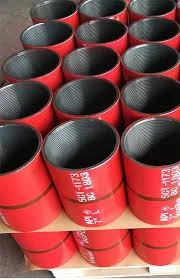- Afrikaans
- Albanian
- Amharic
- Arabic
- Armenian
- Azerbaijani
- Basque
- Belarusian
- Bengali
- Bosnian
- Bulgarian
- Catalan
- Cebuano
- Corsican
- Croatian
- Czech
- Danish
- Dutch
- English
- Esperanto
- Estonian
- Finnish
- French
- Frisian
- Galician
- Georgian
- German
- Greek
- Gujarati
- Haitian Creole
- hausa
- hawaiian
- Hebrew
- Hindi
- Miao
- Hungarian
- Icelandic
- igbo
- Indonesian
- irish
- Italian
- Japanese
- Javanese
- Kannada
- kazakh
- Khmer
- Rwandese
- Korean
- Kurdish
- Kyrgyz
- Lao
- Latin
- Latvian
- Lithuanian
- Luxembourgish
- Macedonian
- Malgashi
- Malay
- Malayalam
- Maltese
- Maori
- Marathi
- Mongolian
- Myanmar
- Nepali
- Norwegian
- Norwegian
- Occitan
- Pashto
- Persian
- Polish
- Portuguese
- Punjabi
- Romanian
- Russian
- Samoan
- Scottish Gaelic
- Serbian
- Sesotho
- Shona
- Sindhi
- Sinhala
- Slovak
- Slovenian
- Somali
- Spanish
- Sundanese
- Swahili
- Swedish
- Tagalog
- Tajik
- Tamil
- Tatar
- Telugu
- Thai
- Turkish
- Turkmen
- Ukrainian
- Urdu
- Uighur
- Uzbek
- Vietnamese
- Welsh
- Bantu
- Yiddish
- Yoruba
- Zulu
Key Distinctions Between Casing and Tubing in Oil and Gas Operations
Differences Between Casing and Tubing in Oil and Gas Industry
In the oil and gas industry, casing and tubing are two critical components utilized in the drilling and completion of wells. While both serve essential functions in the extraction process, they have distinct differences in purpose, design, installation, and maintenance. Understanding these differences is crucial for those involved in the drilling process, as they impact the overall efficiency and safety of the operation.
Definition and Purpose
Casing is a series of steel pipes that are installed in the borehole after drilling has been completed. Its primary purpose is to protect the wellbore from collapse and to isolate different layers of rock and water from one another, thereby preventing the contamination of groundwater and maintaining the integrity of the drilling operation. Casing helps in supporting the walls of the well and is vital for maintaining pressure within the wellbore.
On the other hand, tubing is a smaller diameter pipe that runs through the center of the casing. It serves as a conduit for oil or gas to flow from the reservoir to the surface. Tubing allows the produced hydrocarbons to be extracted efficiently, and it can be removed and replaced as needed without compromising the integrity of the casing.
Design and Materials
Casing and tubing are designed differently, with each tailored for its specific function. Casing pipes are generally thicker and more robust because they need to withstand the external pressures of the surrounding geological formations and the weight of the overlying rock. They are usually constructed from high-strength steel and are available in various grades depending on the well's depth and the specific environmental conditions.
In contrast, tubing is thinner and lighter than casing and is designed to handle the internal pressures created by the fluids flowing through it. Tubing also often includes additional features such as centralizers, which help to maintain its position within the casing, and hangers, which support the tubing string at the surface.
what are the differences between casing and tubing?

Installation Process
The installation of casing and tubing also differs in terms of procedure. Casing is typically run into the wellbore after drilling is complete. This process involves cementing the casing in place, which not only secures the casing but also provides additional sealing to prevent fluid migration between different formations. The cement used is pumped into the annulus between the casing and the borehole, ensuring that the casing remains stable and secure.
In contrast, tubing is installed after the casing has been cemented and frequently only after the well has been completed. It is lowered into the casing through a process known as stringing. Once the tubing is in place, it can be equipped with various accessories, such as pumps or valves, to facilitate the production process.
Maintenance and Replacement
Maintenance is another area where casing and tubing differ. Casing is expected to remain in place for the lifetime of the well, and its integrity is assessed periodically through logging and inspection techniques. Should any issues arise, remedial actions can be taken, such as using cement squeezes to repair leaks.
In contrast, tubing may require more frequent inspection and replacement due to wear and tear from the continuous flow of produced fluids. Tubing can suffer from corrosion, scale buildup, and other operational issues, necessitating straightforward access for maintenance.
Conclusion
In summary, casing and tubing serve distinct roles in the oil and gas industry, with differences in purpose, design, installation, and maintenance. Casing is crucial for the structural integrity and safety of the wellbore, while tubing is essential for the efficient transport of produced hydrocarbons to the surface. Understanding these differences is vital for professionals in the industry to ensure the successful operation and longevity of oil and gas wells.
-
Tubing Pup Joints: Essential Components for Oil and Gas OperationsNewsJul.10,2025
-
Pup Joints: Essential Components for Reliable Drilling OperationsNewsJul.10,2025
-
Pipe Couplings: Connecting Your World EfficientlyNewsJul.10,2025
-
Mastering Oilfield Operations with Quality Tubing and CasingNewsJul.10,2025
-
High-Quality Casing Couplings for Every NeedNewsJul.10,2025
-
Boost Your Drilling Efficiency with Premium Crossover Tools & Seating NipplesNewsJul.10,2025







